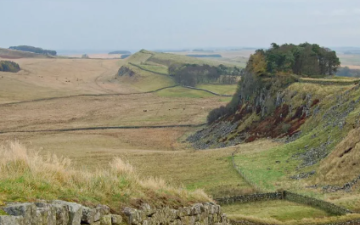Descartes Underwriting’s Australian team sat down together to share their insights on current market conditions across the country. Recent flood events, as well as bushfire, cyclone, and other Nat Cat risks have inevitably had a direct toll on the insurance industry.
Read on to hear from the Head of Australia & North-East Asia, Ben Qin, and Business Development Directors, Lynn Raymond Roehrig and Trang Ha as they discuss how parametric insurance provide a great risk alternative for Australian industries, such as the agricultural sector, that take face the full brunt of climate risks amidst a challenging insurance market context.

How would you describe current insurance market conditions across Australia?
Ben: Many insurers and reinsurers are reviewing their position for the Nat Cat business, with some markets withdrawing altogether. This has had a flow-on effect on clients here in Australia, especially as the international insurance market is very connected to the local markets due to the nature of insurance and reinsurance treaties.
Historically, peak climate risk zones in Australia are above the 26th parallel for cyclone exposures, typically referred to as your ‘primary perils’, alongside New Zealand earthquakes. Now, however, as we come to the end of a triple dip La Niña – three consecutive La Niña events in a row- we see secondary perils occurring at a higher frequency. In today’s market: flood, storms and bushfires have become the focus, with recent flooding in 2022, devastating bushfires in 2019 and abnormal hailstorms in 2018.
We are also observing escalated factors from global events like the COVID-19 pandemic, the war in Ukraine, Hurricane Ian and global supply chain issues. All of which have had a significant impact on global and local (re)insurance markets.
What demand do you see across the country for parametric insurance solutions?
Lynn: Meeting with our broking partners here in Australia, natural catastrophe capacity remains a significant concern. Clients need adequate, viable solutions to meet their businesses’ growing and shifting needs. Parametric insurance is coming in at a great time, with increased awareness by clients, because they see it as a viable solution for adequate capacity, and as a solution that meets their needs in a world where business and insurance are changing. Parametric insurance solutions are built to respond quickly to insured events. They assist by providing quick payment of claims to ensure businesses stay on their feet and meet their financial and operational obligations.
Driving current needs is the La Niña weather cycle, with flood and tropical cyclone being the main wet season perils. Businesses in Australia continue to operate in Nat Cat prone areas, and they need to. That’s where the opportunity is, that’s where the community is – and they need to be able to serve in those areas. Recent events, including the February/March and June/July floods here in Australia, further highlights the need for quick insurance responses following a significant event.
Descartes meets this need, offering parametric products that respond quickly. Our covers provide the flexibility to clients to combat inflationary pressures. Following triggering loss events, our products can be that quick cash injection liquidity that puts their business back into operations.
The other highly beneficial thing about our product, and parametric in general, is the ability for us to take into account the risk mitigation works that clients take on. It’s a collaborative approach between us, the brokers, and the client. We can design and tailor a product that :-
- Responds to events that they need to be covered for.
- Factors in the mitigation work they have undertaken to put capital into to make their business more resilient.
That way, in post-loss, they have confidence in the policy and what it can do for them.
What are the main climate risks for the agricultural sector right now? How is the industry coping?
Ben: While for many decades and generations the Australian agricultural sector has faced a range of climate exposures, we are seeing more extremities and shorter weather cycles. This includes droughts from 2017 to 2019 quickly bouncing to flood from 2020 to 2022. The industry has yet to catch a break facing losses year after year and the agricultural sector remains one of the most uninsured areas in the Australian economy.
If you think about the fundamental pillars of building an economy, you immediately think of basic needs: energy and food.
Therefore the agricultural sector has been a massive contributor to the Australian GDP. Looking over the last 5 years, you would see extremities on dry and wet fronts taking an enormous hit to the industry and its produce. Following droughts from 2017-2019, switching to very wet seasons between 2020-2022, we of course have the upcoming season, which new forecasts confirm is bouncing back to a dry season.
These extremities are becoming the norm, which is not something that generations of growers are familiar with. It’s unfortunate, yet it is the world we live in today, and Australia is particularly exposed to these climate changes.
What we are witnessing in Australia is extreme weather events that are no longer considered the norm; what do you think corporations need to do to adapt?
Ben: Risk awareness is the first point, but also it’s about putting in the actual effort to build up structures that move beyond traditional standards. That is essential in terms of risk mitigation to minimize losses from a Nat Cat event. For example, structurally designing assets to withstand certain cyclone conditions. Flood mitigation works to raise building heights and flood barriers.
That’s why parametric products are more sustainable and practical because, contractually, we tailor them to a particular design standard.
That’s why parametric products are more sustainable and practical because, contractually, we tailor them to a particular design standard.
The clients that will take out this sort of cover will be instantly rewarded for the investment they put into mitigation measures. It will be reflected in their insurance premiums and the structure they will be insured for on a parametric basis. Whereas with traditional covers, underwriters take a historical approach, and mitigating actions won’t necessarily come through. They could be penalized or forced to spend more to cover their own assets and pay for other people’s losses in the meantime.

What are some of the challenges you are seeing regarding embracing parametric insurance amongst corporates?
Trang: Some challenges we face are around building awareness of parametric products, educating brokers and clients about the alternative capacity and making sure clients and brokers understand the benefits of parametrics. Most of the market is still learning or wanting to learn more about the parametric offering. For them, it’s challenging to get their head around it. Parametric insurance is just about setting parameters and a particular risk, and if it’s triggered, then we pay out. It’s straightforward. It’s transparent. People are just scared to embrace a new product.
Will parametric insurance be a replacement product in the future for the Australian market? Or continue to be a supplement?
Trang: Parametric insurance isn’t like traditional insurance. It covers specific Nat Cat exposures only. It compliments clients’ existing traditional insurance programs where there is an increasing gap in the market. Due to recent events and the growing frequency of exposures like bushfires and floods, it is common to see more insurers excluding these Nat Cat exposures.
In the coming future, we can see parametric insurance complementing existing ISRs and property policies by filling in the gaps that traditional insurers are opting to pull out of. We have witnessed many insurers being put out of business because they needed the right approach, support or expertise to continue paying claims in these areas.
So I can confidently say, based on the increasing trend of parametric insurance, within the next 10 years, a parametric policy will replace the Nat Cat component of a traditional cover as there is only one solution for the future.
The parametric solution.





